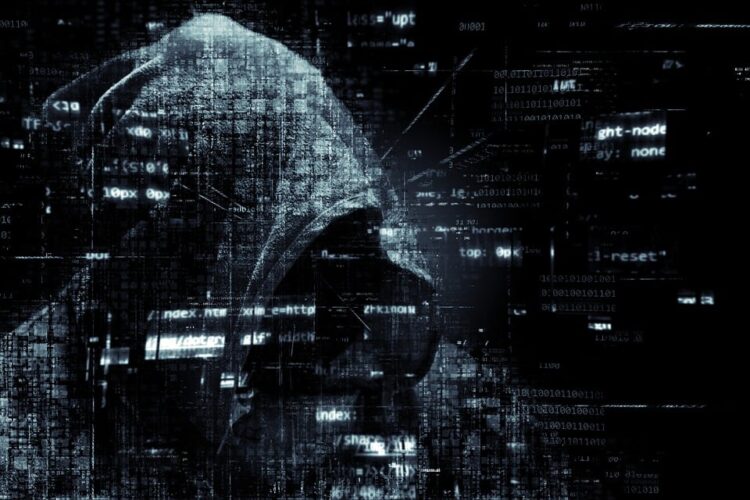The digital transformation of educational institutions has revolutionized how students learn and teachers instruct. However, this technological evolution has simultaneously exposed schools to unprecedented cybersecurity vulnerabilities. As educational environments become increasingly interconnected through digital platforms, the imperative to safeguard school networks has never been more critical. Educational institutions now find themselves on the frontlines of cyber warfare, necessitating robust protective measures to ensure the safety of sensitive information and the continuity of academic operations.
The Growing Cyber Threat Landscape in Education
Educational institutions have emerged as prime targets for cybercriminals in recent years. The convergence of valuable personal data, often outdated security infrastructure, and limited cybersecurity budgets creates an attractive opportunity for malicious actors. Schools maintain extensive databases containing student records, financial information, health data, and intellectual property that hold significant value on the dark web.
The frequency and sophistication of cyberattacks targeting educational facilities have escalated dramatically. Ransomware attacks have paralyzed entire school districts, forcing administrators to choose between paying substantial ransoms or losing access to critical systems for extended periods. These incidents disrupt not only administrative functions but also classroom instruction, as teachers increasingly rely on digital resources and learning management systems to deliver curriculum content.
Beyond ransomware, educational networks face threats from phishing schemes designed to compromise credentials, distributed denial-of-service attacks that overwhelm network capacity, and data breaches that expose confidential student information. The consequences extend beyond immediate operational disruptions, potentially resulting in legal liabilities, financial penalties for regulatory non-compliance, and irreparable damage to institutional reputation.
Understanding Why Schools Are Vulnerable
Several factors contribute to the heightened vulnerability of educational networks. Budget constraints represent perhaps the most significant challenge, as schools must allocate limited resources across numerous competing priorities. Cybersecurity investments often receive lower priority compared to direct instructional needs, building maintenance, and personnel costs. This financial reality leaves many institutions operating with inadequate security infrastructure and insufficient IT staffing.
The decentralized nature of educational technology adoption further complicates security efforts. Teachers and administrators frequently implement new applications and devices without comprehensive security vetting, creating shadow IT environments that bypass institutional oversight. This proliferation of unmanaged endpoints and applications expands the attack surface exponentially, providing numerous potential entry points for cyber intruders.
Legacy systems pose another substantial vulnerability. Many schools continue operating outdated software and hardware that no longer receives security patches or updates from manufacturers. These systems contain known vulnerabilities that cybercriminals can readily exploit. The challenge of modernizing infrastructure while maintaining operational continuity and managing costs creates a persistent security gap.
Human factors also play a crucial role in educational cybersecurity vulnerabilities. Students, teachers, and staff often lack comprehensive cybersecurity awareness training, making them susceptible to social engineering tactics. A single clicked phishing link or compromised password can provide attackers with initial access to compromise entire networks. The diverse user base within schools, ranging from young children to adult employees, requires tailored security education programs that address varying levels of technical sophistication.
Essential Components of School Network Protection
Implementing comprehensive cybersecurity protection requires a multi-layered defense strategy that addresses various threat vectors. Network segmentation stands as a foundational element, dividing school networks into distinct zones with controlled access between segments. This architecture prevents attackers who compromise one area from easily moving laterally throughout the entire network. Administrative systems should operate separately from instructional networks, and guest wireless access must remain isolated from core infrastructure.
Advanced firewall systems serve as the first line of defense, monitoring incoming and outgoing network traffic according to predetermined security rules. Next-generation firewalls incorporate deep packet inspection, intrusion prevention capabilities, and application-aware filtering that provides granular control over network communications. These systems can identify and block malicious traffic patterns before they reach vulnerable internal systems.
Endpoint protection has evolved beyond traditional antivirus software to encompass comprehensive endpoint detection and response solutions. These advanced platforms continuously monitor device behavior, identifying suspicious activities that may indicate compromise. Machine learning algorithms analyze patterns to detect zero-day threats that haven’t been previously documented, providing protection against emerging attack methods.
Email security deserves particular attention given that phishing remains one of the most effective attack vectors. Advanced email filtering systems analyze message content, sender reputation, and embedded links to identify potentially malicious communications before they reach user inboxes. Sandboxing technology can detonate suspicious attachments in isolated environments to determine whether they contain malware.
Data Protection and Privacy Compliance

Educational institutions handle extraordinarily sensitive information requiring rigorous protection measures. Student records contain personal identifiable information, academic performance data, disciplinary records, and health information that must be safeguarded according to various regulatory frameworks. The Family Educational Rights and Privacy Act establishes federal requirements for student data protection, while state laws may impose additional obligations.
Encryption represents a critical data protection mechanism, rendering information unreadable without proper decryption keys. Data should be encrypted both in transit across networks and at rest in storage systems. This ensures that even if attackers intercept communications or gain access to storage devices, they cannot readily exploit the information contained therein.
Access control policies determine who can view, modify, or delete specific information within school systems. Role-based access control assigns permissions based on job functions, ensuring that users only access data necessary for their responsibilities. Multi-factor authentication adds an additional security layer, requiring users to verify their identity through multiple means before accessing sensitive systems.
Regular data backups constitute an essential safeguard against both cyberattacks and accidental data loss. Schools should implement automated backup systems that create multiple copies of critical information, storing them in geographically diverse locations. This redundancy ensures that institutions can recover operations even if primary systems become compromised or corrupted. Backup systems themselves require protection, as attackers increasingly target backup repositories to prevent recovery without ransom payment.
Building a Cybersecurity Culture
Technology solutions alone cannot provide adequate protection without corresponding changes in organizational culture and behavior. Developing comprehensive cybersecurity awareness among students, faculty, and staff represents a critical investment in institutional resilience. Regular training programs should address common threats, safe online practices, and reporting procedures for suspicious activities.
Educational content must be tailored to different audiences within the school community. Young students benefit from age-appropriate lessons about protecting personal information online and recognizing stranger danger in digital contexts. Older students require more sophisticated instruction covering topics like secure password management, identifying phishing attempts, and understanding the implications of oversharing on social media platforms.
Faculty and staff training should emphasize their role as guardians of student information and institutional security. Educators need practical guidance on securely using educational technology tools, recognizing social engineering attempts, and following established security protocols. Administrative personnel who handle sensitive financial or personal data require specialized training appropriate to their elevated access privileges.
Creating a culture of security consciousness involves more than periodic training sessions. Schools should implement continuous awareness campaigns using posters, email reminders, and simulated phishing exercises that reinforce key concepts. Recognizing and rewarding good security practices encourages positive behaviors, while avoiding punitive responses to honest mistakes that might discourage reporting of potential security incidents.
Incident Response and Recovery Planning
Despite best preventive efforts, no security system offers absolute protection. Educational institutions must develop comprehensive incident response plans that outline specific procedures for detecting, responding to, and recovering from security breaches. These plans should clearly define roles and responsibilities, establish communication protocols, and provide step-by-step guidance for various incident scenarios.
The initial detection phase requires robust monitoring capabilities that can identify anomalous network behavior, unauthorized access attempts, or indicators of compromise. Security information and event management systems aggregate logs from various sources, applying analytics to identify patterns that may indicate security incidents. Automated alerting ensures that security personnel receive timely notifications of potential threats requiring investigation.
Containment procedures aim to limit the scope and impact of confirmed incidents. This may involve isolating affected systems from the network, disabling compromised user accounts, or temporarily shutting down specific services to prevent further damage. Rapid containment can significantly reduce the ultimate cost and disruption associated with security incidents.
Communication planning addresses both internal and external stakeholders. School leadership requires timely, accurate information to make informed decisions about response actions. Parents and students may need notification if their personal information has been compromised. Law enforcement agencies and regulatory bodies may require formal reporting of certain types of incidents. Media relations strategies help manage public perception and maintain community trust during crisis situations.
Collaborative Defense Strategies
No school operates in isolation, and cybersecurity protection benefits significantly from collaborative approaches. Regional educational service agencies can provide shared security services, threat intelligence, and incident response capabilities that individual districts cannot afford independently. These collaborations leverage economies of scale to deliver enterprise-grade security solutions to smaller institutions with limited resources.
Information sharing about emerging threats, attack patterns, and effective defensive measures strengthens the collective security posture of the educational community. When one school identifies a new phishing campaign or malware variant targeting educational institutions, sharing that intelligence allows others to implement proactive defenses before becoming victimized. Various information sharing organizations facilitate these exchanges while protecting the confidentiality of participating institutions.
Partnerships with law enforcement agencies provide access to threat intelligence from broader investigations and potential assistance during significant security incidents. Federal agencies like the FBI and the Cybersecurity and Infrastructure Security Agency offer resources specifically designed for educational institutions, including threat briefings, security assessments, and incident response support.
Technology vendors and managed security service providers represent another valuable collaborative relationship. These partners bring specialized expertise and resources that schools typically cannot develop internally. Managed detection and response services provide 24/7 security monitoring by experienced analysts who can identify and respond to threats outside normal business hours when school IT staff are unavailable.
Emerging Technologies in Educational Cybersecurity
Artificial intelligence and machine learning technologies are revolutionizing cybersecurity defense capabilities. These systems can analyze vast quantities of data to identify subtle patterns indicating sophisticated attacks that might evade traditional signature-based detection methods. Behavioral analytics establish baselines of normal user and system activity, flagging deviations that may indicate compromised accounts or insider threats.
Zero trust architecture represents a fundamental shift in network security philosophy. Rather than assuming that users and devices within the network perimeter are trustworthy, zero trust frameworks require continuous verification of all access requests regardless of origin. This approach proves particularly valuable in modern educational environments where students and staff access resources from numerous locations and devices.
Cloud-based security solutions offer scalability and flexibility particularly suited to educational environments. Cloud access security brokers provide visibility and control over cloud application usage, enforcing consistent security policies across diverse software-as-a-service platforms. Cloud-native security tools can scale automatically to accommodate fluctuating demand without requiring significant capital investment in hardware infrastructure.
Blockchain technology shows promise for securing academic credentials and student records. Distributed ledger systems provide tamper-evident storage of sensitive information, allowing verification of document authenticity without exposing underlying data. This technology could revolutionize transcript management, professional certification, and lifelong learning records while enhancing privacy protection.
Budget Optimization for School Cybersecurity

Financial constraints need not preclude effective cybersecurity programs. Strategic prioritization ensures that limited resources address the most significant risks first. Risk assessments identify vulnerabilities most likely to be exploited and with the greatest potential impact, allowing schools to focus investments where they will provide maximum protection.
Free and open-source security tools can provide substantial capabilities without licensing costs. Many robust security solutions are available under open-source licenses, including firewall software, intrusion detection systems, and security monitoring platforms. While these tools may require greater technical expertise to implement and maintain, they offer cost-effective alternatives to commercial products for schools with skilled IT personnel.
Grant funding and government programs provide financial assistance for educational cybersecurity initiatives. Various federal and state programs offer funding specifically designated for improving school technology security. Cybersecurity and Infrastructure Security Agency grants, E-Rate program modernizations, and state-level educational technology funds represent potential funding sources that schools should actively pursue.
Cyber insurance offers financial protection against the potentially catastrophic costs of significant security incidents. These policies can cover expenses including forensic investigations, legal fees, notification costs, credit monitoring services, and even ransom payments in some cases. However, insurers increasingly require evidence of adequate security measures before issuing coverage, making baseline security investments necessary to maintain insurability.
The Path Forward
Securing educational networks represents an ongoing journey rather than a destination. The threat landscape continues evolving as attackers develop new techniques and identify fresh vulnerabilities. Schools must commit to continuous improvement of their security posture, regularly reassessing risks and updating defensive measures to address emerging challenges.
Investment in cybersecurity should be viewed not as an optional expense but as essential infrastructure comparable to physical security systems, fire suppression equipment, and emergency preparedness planning. The potential consequences of inadequate cybersecurity—ranging from data breaches exposing thousands of student records to extended operational disruptions preventing classroom instruction—far exceed the costs of implementing robust protective measures.
Educational leaders must champion cybersecurity as an institutional priority, ensuring adequate resource allocation and fostering organizational cultures that value security consciousness. Board members, superintendents, and principals set the tone for how seriously their institutions treat cybersecurity risks. Their visible commitment signals to staff, students, and the broader community that protecting sensitive information and maintaining secure learning environments constitutes a fundamental responsibility.
The digital transformation of education offers tremendous opportunities to enhance learning outcomes, expand access to educational resources, and prepare students for technology-driven careers. Realizing these benefits requires creating secure digital environments where students can explore, learn, and grow without compromising their privacy or safety. By implementing comprehensive cybersecurity programs, schools fulfill their obligation to serve as trusted stewards of student information while maintaining the reliable technology infrastructure essential to modern education.
As educational institutions navigate an increasingly complex threat environment, the imperative for robust network security grows ever more urgent. The shields protecting school networks must be constantly maintained, regularly tested, and continuously improved to counter evolving cyber threats. Through strategic investments, collaborative partnerships, cultural transformation, and unwavering commitment from leadership, schools can build resilient cybersecurity programs that safeguard their most precious assets: the students they serve and the trust their communities place in them.





